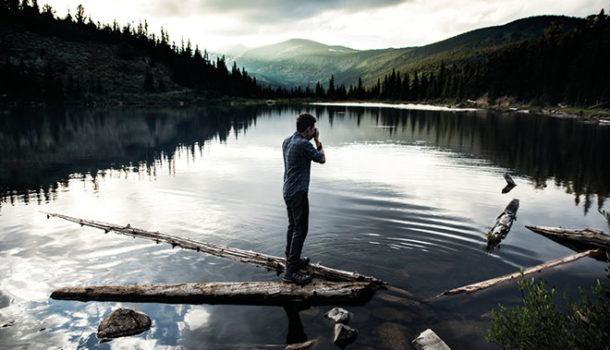Get the most out of your compact mirrorless camera. By Jac Kritzinger
Compact mirrorless cameras, or compact system cameras (CSCs), have created a decent buzz of late. Combining large image sensors, small size, and a wide range of interchangeable lenses, they seem ready to step in as the lightweight DSLR replacement for those who want less bulk. But how do they stand up to the rigours of travel photography?
Battery boost
CSCs sport a radically different optical design from that of a DSLR – the mirror and pentaprism system from the latter are not present in the former (hence the ‘mirrorless’ label and the drastic reduction in size). CSCs incorporate an electronic viewfinder (EVF) that digitally displays what the camera sees; one doesn’t actually look through the lens as with DSLRs.
EVFs are nifty and vastly improved of late, but they consume a lot of battery power: they’re constantly working at building an image of the frame you’re composing. If you’re used to a DSLR, the reduced battery life may come as a shock. If you spend a lot of time on the road, without the possibility of charging, be sure to buy extra batteries for your CSC (which can be costly), and store the spares in body-hugging pockets when you’re shooting in cold conditions.
Go for good glass
Having the option of changing lenses on such a small camera is what makes CSCs so attractive. Given the highly sensitive DSLR-size image sensors under the hood, buying decent glass is a must. As with a DSLR system, make sure you get the very best you can afford. A large variety of high-quality lenses are available, mimicking the DSLR range, from super-zooms to exotic, large-aperture primes. The specialist lenses come with a hefty price tag, though. Make sure you start off with a decent mid-length zoom for your all-rounder, then add more glass as you go.
Keep it simple
As with a DSLR setup, there’s a huge number of accessories available for your CSC. Be sure to keep in mind, though, that the main attraction of these cameras is portability. Don’t weigh yourself down with tons of add-ons, as this misses the whole point of the CSC system. Avoid the temptation to carry too many lenses (a solid zoom and a fast prime should do) or fancy filters. Go for a model with a built-in flash, as opposed to an external one. Your whole setup should be able to slip into a backpack in a jiffy, or even your pocket. Ironically enough, most CSCs (and their lenses) are not quite as tough as DSLRs in terms of build quality and weather sealing, so be sure not to get too careless flinging your pricey new toy around!
Take it for a test drive
CSCs look very hip – the square, retro design is reminiscent of rangefinder cameras from the ’60s and ’70s. The handling and ergonomics can be tricky, though. If you’re coming from a normal compact camera, the multitude of dials and buttons on such a small piece of equipment may confuse you; if you’re used to a DSLR, the tiny, blocky body could feel awkward in your hands. Be sure to get a feel for the model you’re thinking about buying. As with DSLRs, in such a big field where there’s little to set individual models apart in terms of features and specs, the way it feels in your hand is often the deciding factor. Given their small size and low weight, CSCs are hoping to become an everyday accessory for the serious photographer. If you don’t like the way it handles, though, it’s likely to end up staying at home when you head out.
If you keep all of the above in mind, a CSC may be the way forward for your travel photography. The image quality and price tag are on par with that of a DSLR, minus the size and weight. If you play to its strengths and respect its weaknesses, a CSC can deliver some amazing results.
Remember, however, that a camera is only as good as the photographer behind it, so be sure get the all basics right first. Then you can get out there and have some proper fun.
Photography Gallo/Gettyimages
(This article was first published in the winter 2016 issue of AA traveller magazine)




